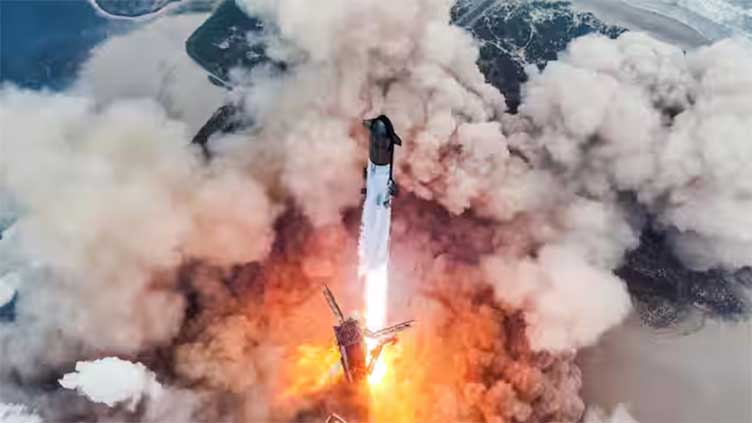Rocket's explosion led to wide hole in Earth atmosphere: study

Technology
The rocket had exploded just minutes after the launch
(Web Desk) - In a recent study, it has been revealed that when the Starship rocket of SpaceX exploded during its second flight on November 18, 2023, it led to the formation of a temporary 2,000-km wide hole in the atmosphere of the Earth.
The rocket had exploded just minutes after the launch when the Super Heavy booster of the rocket blew up at an altitude of 90 kilometres.
A few minutes later, another explosion occurred at an altitude of about 150 kilometres which involved the rocket's upper stage.
The research, which was published in the journal Geophysical Research Letters, showed that these explosions disrupted the ionosphere, which is a region of the upper atmosphere that is located between 80 to 650 kilometres above the Earth.
This part of the atmosphere is called the ionosphere because of the ions which contain charged particles and have lost their electrons.
As per the researchers, the Starship rocket's speed and power were faster than the speed of sound which created shock waves.
These shock waves took the form of cone-like acoustic waves which travelled across the ionosphere.
However, these waves - which generally move southward during rocket launches - travelled in the northern direction, which is unusual.
As reported by Futurism, the study's lead author and atmospheric physicist at Russia’s Institute of Solar-Terrestrial Physics Yury Yasyukevich said that sound waves were produced by the explosions which neutralised nearby charged atoms and led to the "disappearance" of the electrons.
Because of this reaction, a temporary hole was created in the ionosphere which was spread across 1931 km.
The hole was created because of chemical processes triggered by interactions between the fuel of the rocket and the ionised particles in the atmosphere. However, the disruption was short-lived.
It took 30 to 40 minutes for the hole to heal itself, as per the researchers.
Although the event was significant because of the scale of the explosion, the creation of such ionospheric holes is not unusual.



